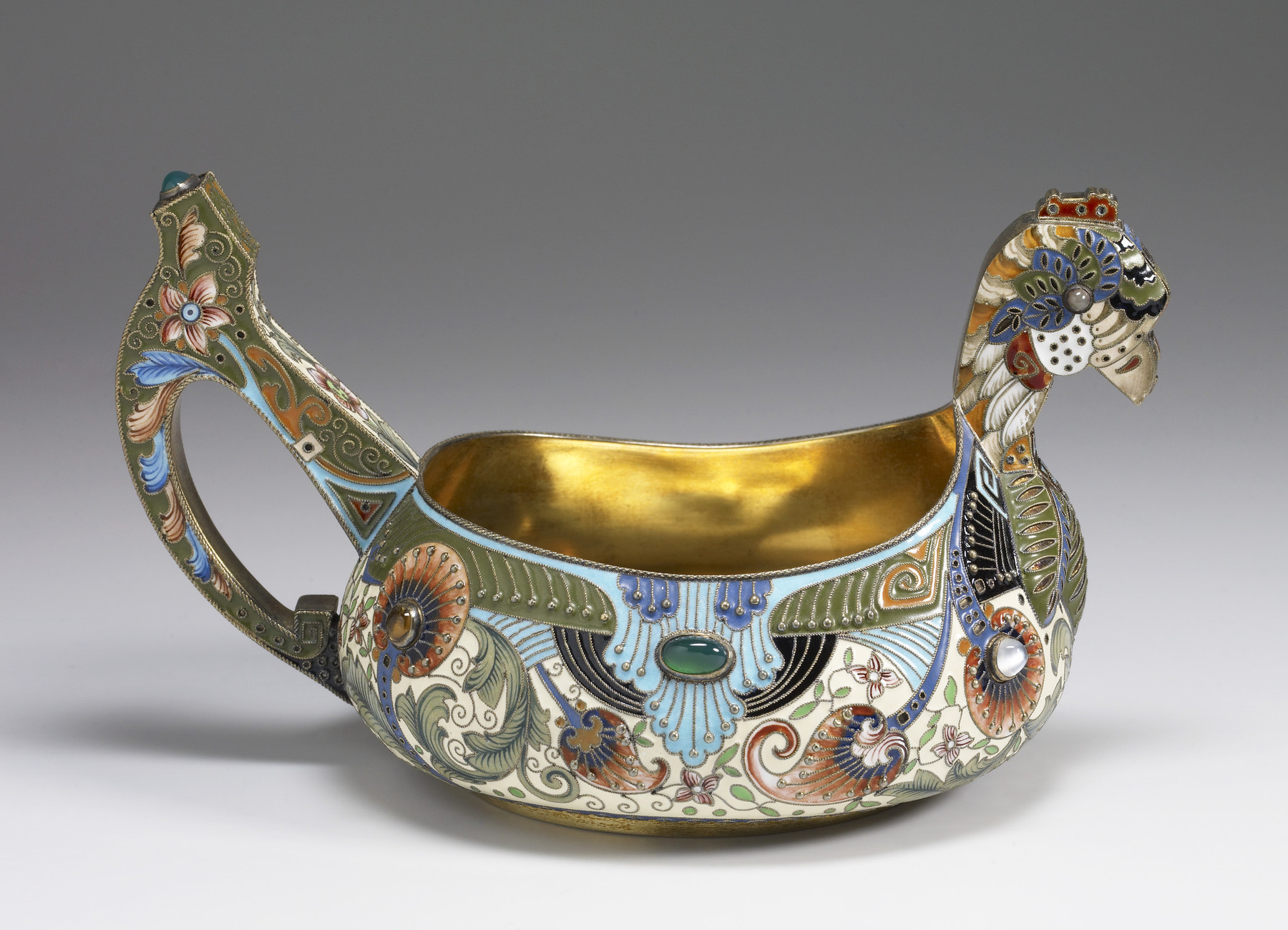Kovsh
(18th and 19th Centuries )
The entire exterior of this hen-shaped kovsh is enameled in both abstract and schematized floral patterns in painted, opaque filigree enamel. In the lower portion, they include oval and boteh-shaped blossoms in pink and purple over a creamy white ground. Above, the more abstract decoration is in turquoise, olive green, and black enamel. Lavish use is made of patterns of strands of filigree wire terminating in raised silver gilt pellets.
Encircling the bottom of the kovsh, just above the foot, there are two rows of wire spirals, one against a blue ground and the other over an olive green ground.
Inscription
Provenance
Provenance (from the French provenir, 'to come from/forth') is the chronology of the ownership, custody, or location of a historical object. Learn more about provenance at the Walters.
Sale, Sotheby's New York, October 22, 2002; Jean M. Riddell, Washington, D.C., October 26, 2002, by purchase [Leo Kaplan, New York, as agent]; Walters Art Museum, 2010, by bequest.
Geographies
Russia, Moscow (Place of Origin)
Measurements
H: 4 1/16 x W: 6 15/16 x D: 4 7/16 in. (10.3 x 17.7 x 11.3 cm)
Credit Line
Bequest of Mrs. Jean M. Riddell, 2010
Location in Museum
Not on view
Accession Number
In libraries, galleries, museums, and archives, an accession number is a unique identifier assigned to each object in the collection.
In libraries, galleries, museums, and archives, an accession number is a unique identifier assigned to each object in the collection.
44.774


